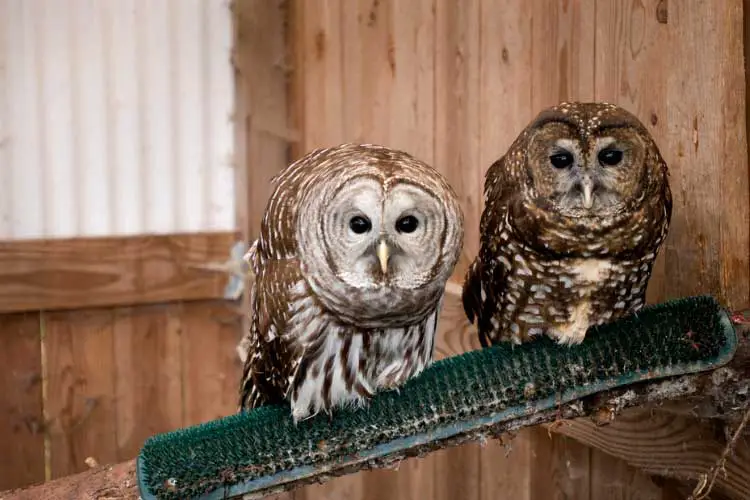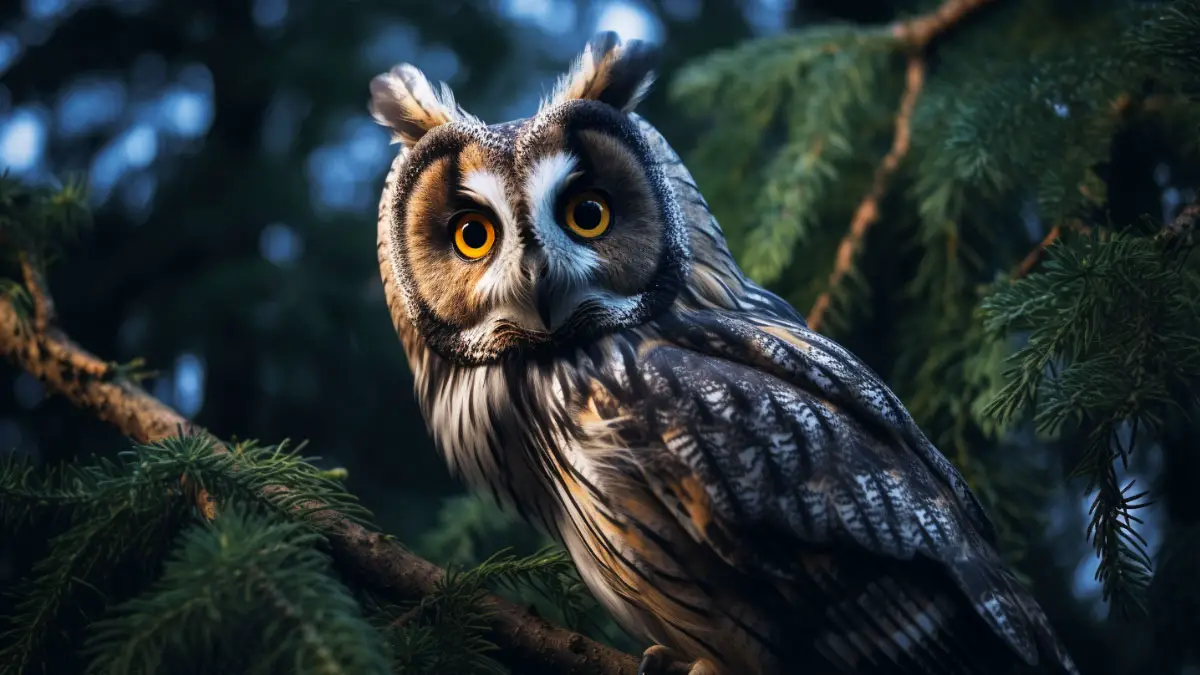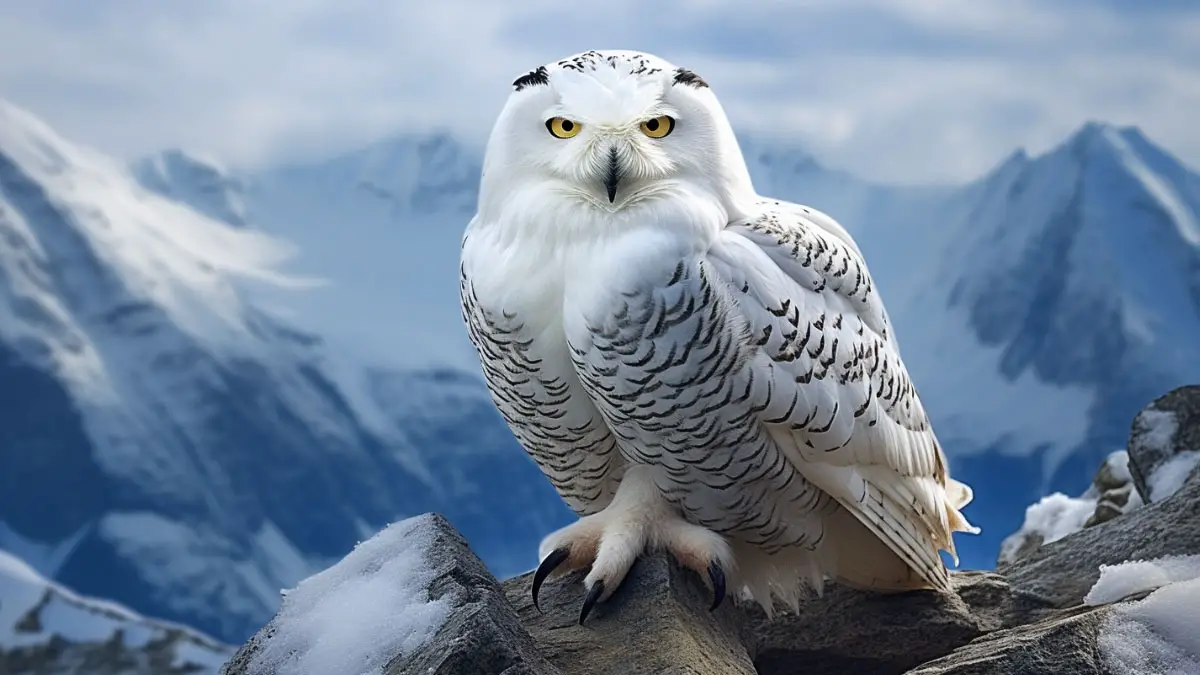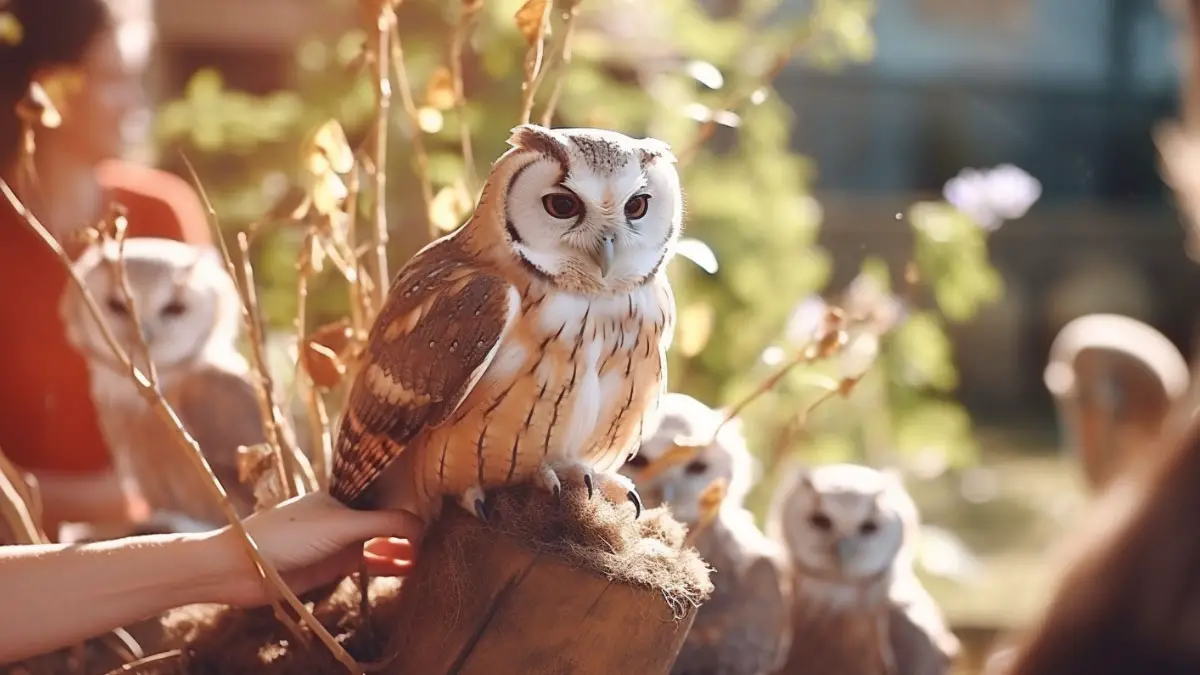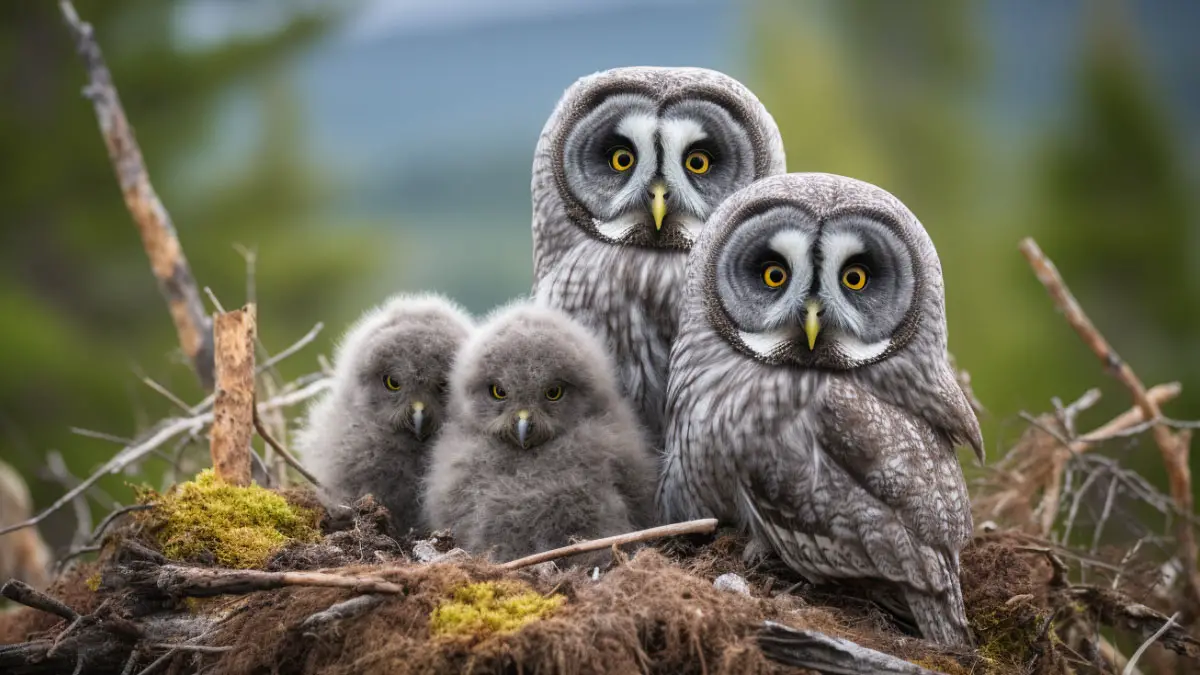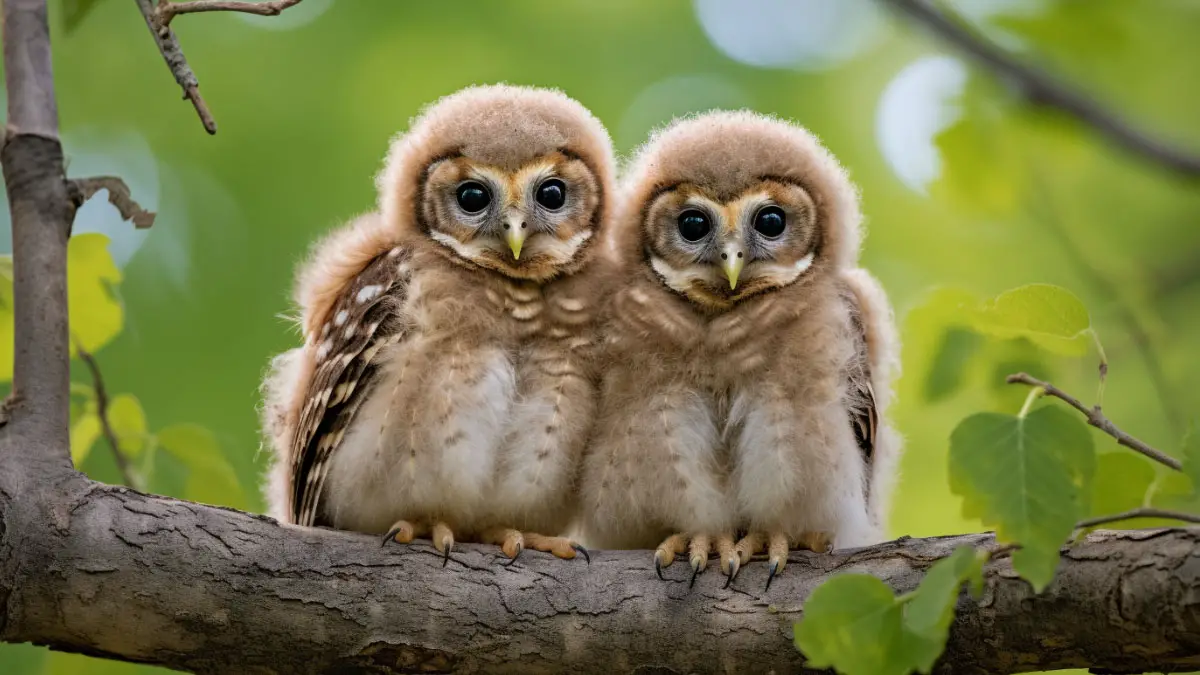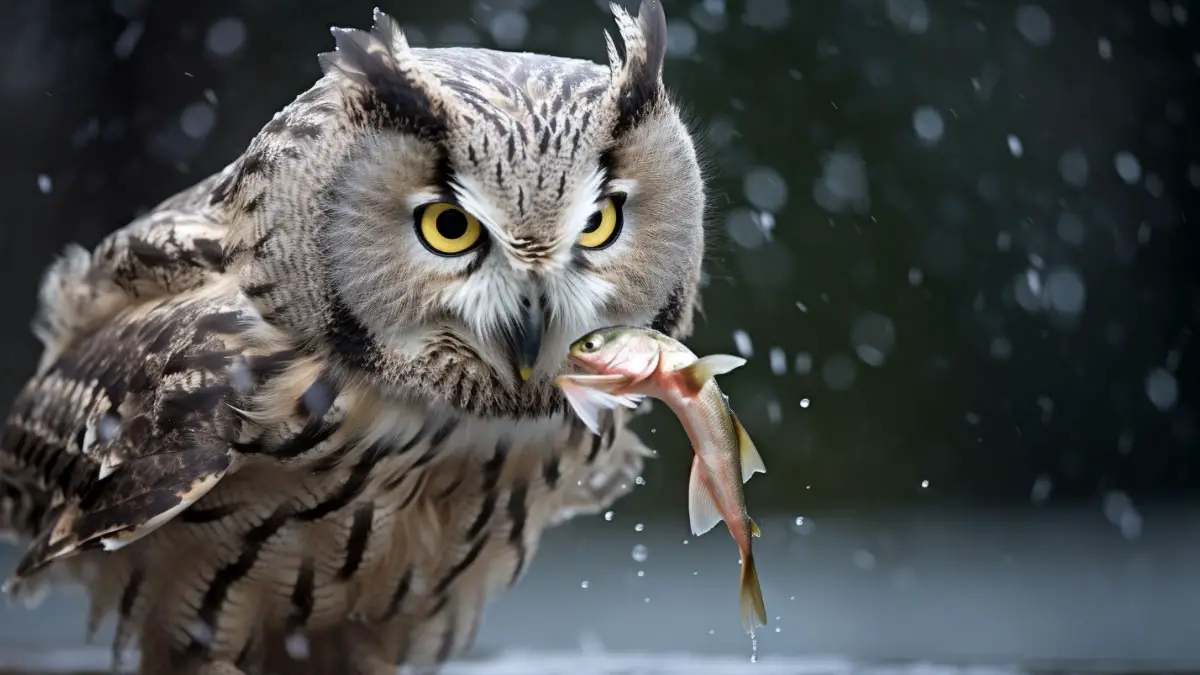Though Barred Owls used to live in the eastern region of the country, they started invading the western region in 1959. This endangered a similar species called the Spotted Owl.
So, what is the Spotted Owl vs Barred Owl: Identification, Differences, Similarities? Barred Owls are a bit larger than Spotted Owls. But the wingspan and weight of these owls are quite similar. Spotted Owls are darker in appearance, but Barred Owls have a light grey plumage. They also have other differences and similarities.
Let’s talk about the identification marks, differences, and similarities of these two closely related species.
Spotted Owl Vs Barred Owl: Comparison Chart
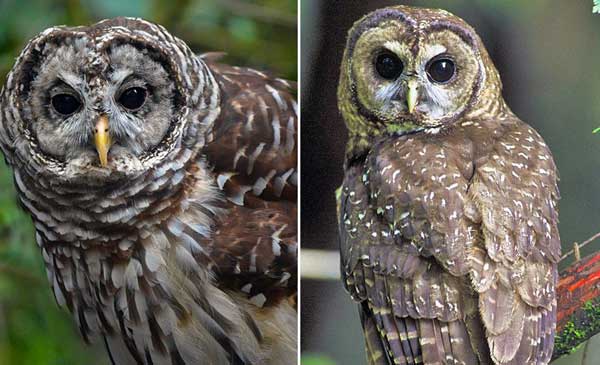
The table below shows a comparison between a spotted owl and a barred owl at a glance.
| Features | Spotted Owl | Barred Owl |
| Species | Strix occidentalis | Strix varia |
| Feathers | Dark brown with horizontal white spots | Light gray with vertical brown spots or bars |
| Facial Disk | Brown | Whitish gray |
| Eye Color | Dark brown | Dark brown |
| Beak Color | Pale yellow | Bright yellow |
| Average Length | Females – 48 cmMales – 46 cm | Females – 61 cmMales – 48 cm |
| Average Wingspan | Females – 109 cmMales – 106 cm | Females – 111 cmMales – 105 cm |
| Average Weight | 760g | 715g |
| Expected Lifespan | 15-21 years | 18-23 years |
How to Identify Spotted Owl Vs Barred Owl?
You might already have a quick idea of how these owls look. But here is a more in-depth comparison of the appearance of these two types of owls so that you can identify them easily.
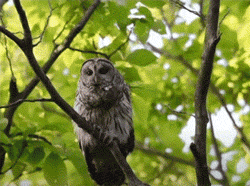
Plumage
A Northern Spotted Owl can easily be identified with its dark brown plumage. There are horizontal white spots, and the spots are dense on the chest. The back also has dense spots, but the wings and abdomen area have fewer spots.
On the other hand, Barred Owls have a light gray plumage with vertical brown spots or bars. This is where they got their name from. The vertical spots are more visible on the chest and abdomen areas. But the density decreases in the neck area.
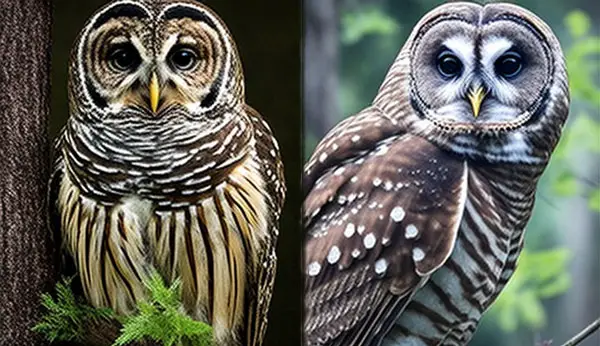
Gender
Though the Barred Owl size is bigger than Spotted Owl; females are larger in both species. So, the average length and wingspan of the female birds are a bit higher than male owls. But everything else is almost identical in female and male birds.
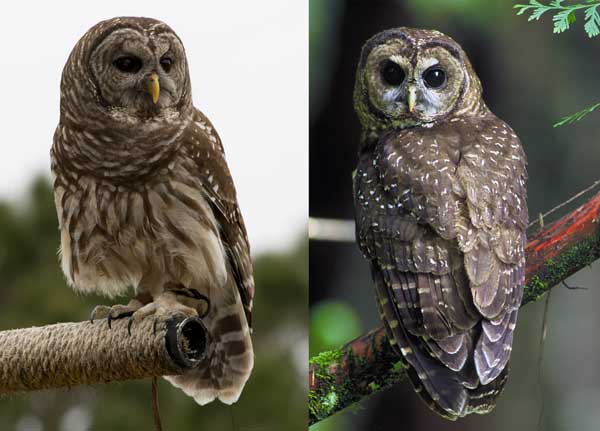
Head, Beak, and Eyes
Spotted Owls have slightly larger heads than Barred Owls. Also, their head is more rounded but lack ear tufts. The facial disks are dark brown, but you will see a distinct X shape covered in light gray or whitish feathers around the eyes. And their beaks are pale yellow.
But Barred Owls have a smaller heads with more straight sides. Their facial disks are whitish, so you won’t clearly see that X shape around the eyes. They have a bright yellow beak, which helps differentiate them from Spotted Owls.

Diet
The feeding behavior of these owls is a bit different. Small and medium mammals are most common on the diet of Spotted Owls. These include mice, rats, squirrels, and other rodents.
They also feed on birds, bats, and arthropods. Spotted Owls are also seen to feed on food waste around various campgrounds. These owls mostly hunt at night, but it is common to see them search for food at dawn and dusk.
You can even sight them on cloudy days come out for food if they need to feed baby Spotted Owl. The perch from where they hunt is usually high.
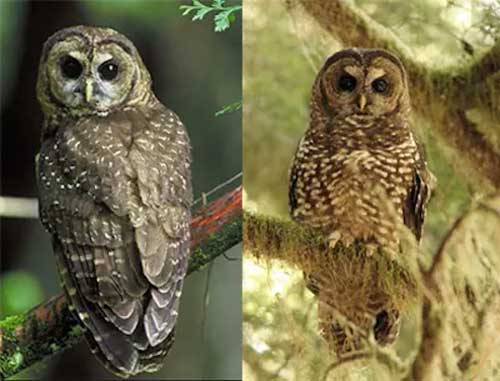
Barred Owls, on the other hand, are more opportunistic predators. They mostly feed on small mammals, birds, arthropods, etc., as long as they can swallow the prey at once.
Minks or chipmunks are also on the list of prey. Crayfish is another favorite food of Barred Owls. These birds also tend to hunt small fish from shallow water.
The diving style is quite similar to that of Spotted Owls. Feeding is also done on high perch. Though they usually hunt at dawn or dusk, you may also see them hunting at day or nighttime, depending on the scarcity.
Spotted Owl Vs Barred Owl: Where Do They Live?
Northern Spotted Owl is usually non-migratory and loves to make their habitat on shaded mountain slopes. They also prefer canyons. As they typically live in humid forests and mountains, they are commonly seen in places like Alaska and British Columbia.
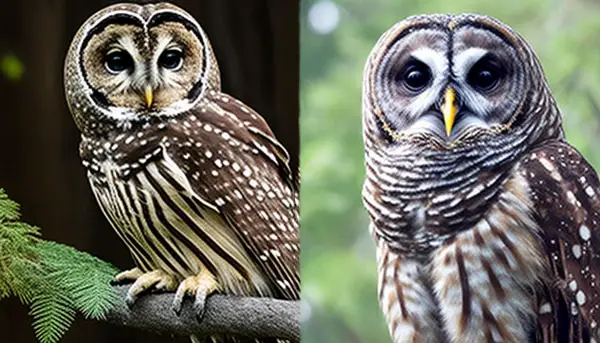
You will also find them in Oregon, Washington, California, Arizona, New Mexico, and Texas.
Mexican Spotted Owls are seen in the eastern region of the Sierra Madre Occidental mountain ranges. Though these birds are non-migratory, it is common for them to move a short distance in the winter. The average migration distance is not more than 30 miles or 50 kilometers.
Barred Owls are also non-migratory, at least they were about 100 years ago. But over these years, they migrated to the western region in search of food and habitats.
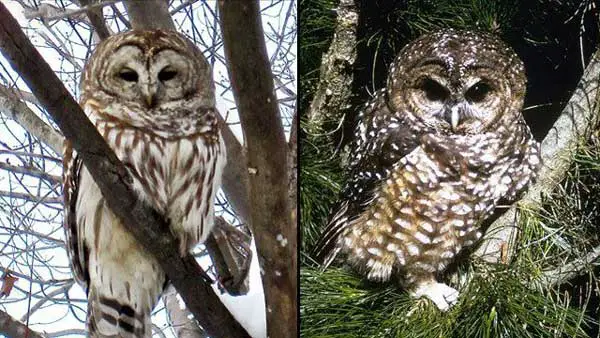
As their habitats in forests got decreased due to logging, they were forced to move to the natural habitats of the Spotted Owls. Unlike Spotted Owls, Barred Owls prefer flat plateaus as their habitat.
Nesting and Breeding Behavior of Spotted Owl Vs Barred Owl
The reproductive age of Spotted Owls is usually one year. But they might take up to three years to start breeding. This species is monogamous, so they stick to their mating partners for their whole life.

They usually nest in tree cavities or rock crevices. Deep canyons are also a favorite nesting place for Spotted Owls. After mating, they lay up to three or four eggs. It takes from 28 to 32 days to hatch the eggs.
Baby spotted owl is able to roam around on their own at the age of five weeks. It takes them up to six weeks to start flying and nine to ten weeks to start hunting.
However, the breeding season of Barred Owls is a bit different than Spotted Owls. This species is ready for breeding at the age of two years. Though they stick to the same partner, they don’t live with the partner unless it is the breeding season. These owls usually nest in tree cavities or broken snags.
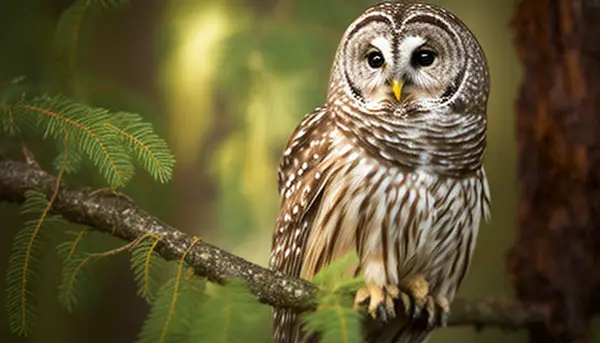
Each clutch usually has up to five eggs, and it takes almost the same as Spotted Owls to hatch the eggs. Thus, baby Barred Owls learn to fly at the age of six weeks. And the hunting age is also similar to Spotted Owls.
Vocalization: Spotted Owl Vs Barred Owl
Both species are pretty vocal, and the sound varies in different situations. Hooting sound is common in Spotted and Barred Owls. Whining or squealing is usually seen in Barred Owls.
They can also imitate human laughter. Spotted Owls make barking sounds or chatter. And female Spotted Owls make a special sound during mating season.
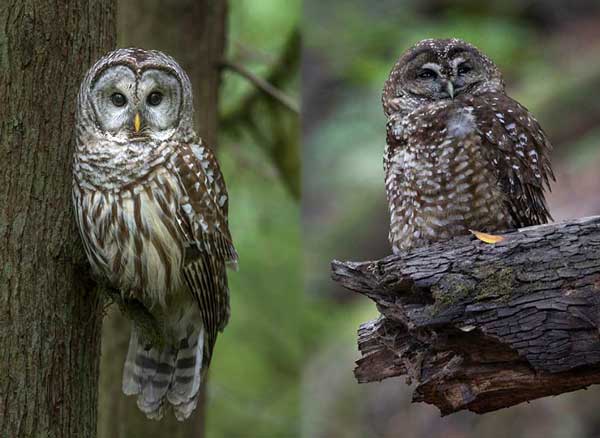
FAQs
You might still have some questions regarding these two types of owls. Here are answers to frequently asked questions.
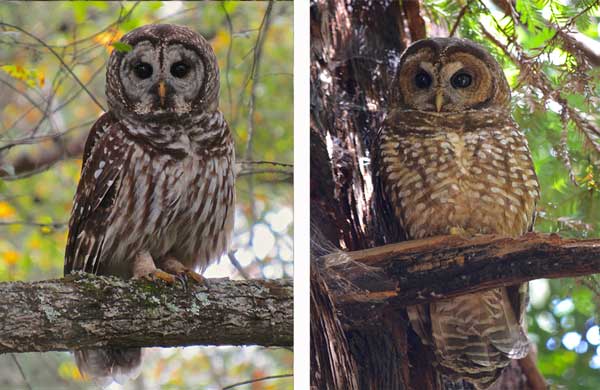
Barred Owls have been overlapping the range of Spotted Owls for about a century now. As Barred Owls are larger and more aggressive than Spotted Owls, the competition for food and habitat between these two species is a big threat to Spotted Owls.
Barred Owl size is smaller than Great Horned Owls and they are the only predator of Barred Owls. This is why Barred Owls avoid the range of Great Horned Owls while migrating or relocating.
The population of Spotted Owls has significantly reduced over the last few years. According to the US Forest Service, the population of Spotted Owls can be from 3,000 to 5,200.
Conclusion
The main difference between Spotted Owl vs Barred Owl is in their appearance. Barred Owls are a bit larger than Spotted Owls and have a light gray plumage with brown bars. But Spotted Owls are dark brown with white spots. The facial disk, head, and beaks are also different in these owls.
Apart from the differences, they share some characteristics when it comes to feeding, nesting, or breeding. The vocalization of these owls is also quite similar. Due to the relocation of Barred Owls and the competition with Spotted Owls, the latter has become an endangered species over the last few decades.
